PDF of this article (395 KB)
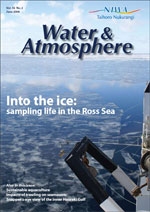

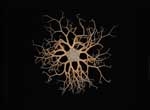
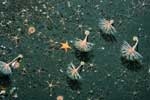
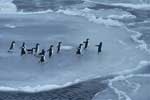




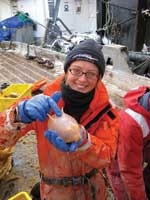
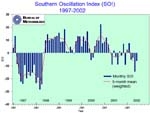
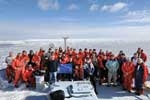
NIWA’s research vessel Tangaroa has battled extreme sea-ice conditions to bring back the goods: thousands of specimens and images of Ross Sea biodiversity. Fiona Proffitt reports on some of the finds.
With a ceremonial send-off by the Prime Minister, they left Wellington on 31 January, bound for the Ross Sea. Fifty days and 7140 nautical miles later, Tangaroa and her 44-strong crew returned home. Despite encountering the worst sea-ice conditions witnessed in the region in 30 years, they successfully sampled 39 sites from the shelf, slope, abyss, and seamounts, including areas and habitats that had never been sampled before.
The ship’s scientific contingent included 25 researchers from NIWA, Ministry of Fisheries, Te Papa, Victoria University of Wellington, University of Waikato, NOAA (USA), and Università di Genova (Italy). Eighteen ship’s crew operated the vessel and assisted with deploying the sampling gear, while a Natural History New Zealand filmmaker documented the entire voyage.
Known as NZ IPY-CAML, the voyage was part of New Zealand’s principal International Polar Year project and was a collaborative effort between government agencies and research providers throughout New Zealand. It also formed part of the Census of Antarctic Marine Life, an international circumpolar survey effort. Its focus was to survey biodiversity to provide a picture of the Ross Sea ecosystem, both for fisheries management purposes, and as a baseline for monitoring the effects of climate change and human activities.
The scientists returned with more than 37 000 specimens. The invertebrate specimens, which cover some 51 groups, are being processed by the NIWA Invertebrate Collection team in Wellington, while the fish have gone to Te Papa for identification and curation. The process of formally identifying, describing, and naming them will take several years. Many of these species will turn out to be new to science, including potentially nine ‘new’ fish species, several new deep-sea molluscs, and a new and particularly large species of hydroid (a coral-like organism).
The team successfully deployed NIWA’s deep towed imaging system (DTIS) down to 3500 m – almost the height of Mount Cook – capturing 55 hours of video and 12 500 still images of the seabed and its inhabitants. This bonanza of imagery will reveal new insights about seafloor habitats, and species distribution, behaviour, and interrelationships. Studies of plankton, microbes, ocean colour and physical properties, fisheries acoustics, and multibeam sampling will also yield awealth of information about the Ross Sea and Southern Ocean environment.
As well as the scientific achievements, the voyage supported a successful education programme hosted by the Science Learning Hub (www.sciencelearn.org.nz), and featured in news media around the world.
Running the numbers
- Ship's company included 44 scientists, technicians, and crew.
- Travelled 7140 nautical miles in 50 days.
- Brought back more than 37 000 specimens.
- Recorded 55 hours of video and 12 500 still images
- For a blog from the voyage and useful links, see: www.niwa.co.nz/rc/antarctica/ipy-caml
Dr Fiona Proffitt is a science journalist based at NIWA in Wellington. The voyage was led by NIWA, supported by new government funding from Land Information New Zealand (LINZ). The overall NZ IPY-CAML project was led by the Ministry of Fisheries, with additional governance provided by LINZ, Antarctica New Zealand, Ministry of Foreign Affairs and Trade, and NIWA.
Teachers’ resource for NCEA Achievement Standards or Unit Standards: Biology Level 2 AS90461
